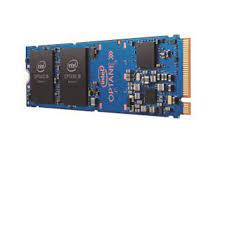16GB OPTANE MEMORY
16GB OPTANE MEMORY
16GB OPTANE MEMORY
SPECIFICATION

Intel Optane Memory: What is It and Why Do You Need It?
If you’re in the market for a new laptop at home or work, you’ve undoubtedly been confronted with a number of choices. It might be easy to choose between a mobile laptop versus a desktop tower, and you might have several stand-out features at the top of your priority list, but when it comes to computer memory, the answer isn’t always clear.
When browsing solid state drives (SSDs) and hard disk drives (HDDs), an Intel® Optane™ motherboard is one choice you might encounter. Not sure what Intel Optane means or what benefits it offers? Then this article is for you. Here we clarify this advanced memory system, including a definition of what it is, how it works, and why you might want it for your computing experience.
In order to understand how the Intel Optane technology works, you first need a brief understanding of a computer’s memory storage system.
In most cases, your computer data will be stored on either an SSD (solid state drive) or an HDD (hard disk drive). The former acts like a solid memory chip; the latter uses a physical arm and a spinning, mechanical disk to read and write information.
There are a number of pros and cons between an SSD and an HDD, but at the core, a solid state drive usually boasts faster processing times than a mechanical hard disk drive. On the other end of the spectrum, a hard disk drive typically offers larger storage space at a lower price per byte, so you can download more movies, install more games, and save more files on a friendlier budget.
The innovative Intel Optane memory hardware combines the best of both worlds. It enables you to boost the performance of a large HDD to achieve SSD-like speeds. You can find it either pre-installed in new laptops and desktop towers, or you may add it to compatible devices.
A few base requirements to run Intel Optane memory include:
- Windows® 10 x64
- 7th Generation (or newer) Intel Core processor
- Intel 200 Series chipset (or newer)
Instead of adding more random access memory (RAM) to your computer (which accelerates your system by enabling the processor to execute more tasks at once), you can enhance performance with an Optane system accelerator on compatible devices. That means you can enjoy maximum storage, at a minimum price, with premium processing power.
What is system acceleration?
The term “system acceleration” refers to the effect that Intel Optane technology has on a computer. Compared to computers without Intel Optane, this smart memory system enables faster task completion and shorter wait times.
When Intel refers to “responsiveness,” they speak to how quickly a computer can complete end-user requests compared to the same computer without Intel Optane memory.
These requests can include:
- Power on, start-up, or boot up
- Search and find files
- Save and transfer large files
- Launch applications
- Game level loading
A high-capacity storage device coupled with Intel Optane memory offers high-speed acceleration with plenty of space to retain data.
How does Intel Optane memory work?
So far, we’ve explained that Intel Optane is a smart memory system that accelerates your computer’s performance and makes it more responsive, but how exactly does it work? In short, the adaptable technology quickly learns the tasks you perform most frequently, including everything between startup, file search, and program launch, and remembers them even when power is off.
According to the company, Optane technology works using a “unique combination of Intel 3D XPoint™ memory media with an Intel-built advanced system memory controller, interface hardware, and software IP” [1]. 3D XPoint (pronounced cross-point) refers to their nonvolatile memory technology, which allows data to be stored and saved much faster than traditional computer architecture can offer.
WHAT IS NON-VOLATILE MEMORY?
“Nonvolatile memory” (NVM) is a class of computer storage that holds saved data even when the power is shut off. It’s typically used for secondary (backup) storage or long-term, persistent storage, as opposed to the volatile form of RAM, which requires constant power to retain data.
Using 3D XPoint, Intel Optane technology is able to move high-speed, high-capacity data storage closer to the computer’s processor. It’s said to have up to 1,000 times lower latency and exponentially greater endurance than NAND flash memory (another form of NVM storage technology) [2].
WHY DOES OPTANE MEMORY MAKE COMPUTING FASTER?
By memorizing your most used data, the smart, adaptable system accelerator can then access and store your frequently used documents, games, pictures, videos, and various applications closer to the computer’s processors.
The next time you go to launch one of these programs, you’ll experience less latency and faster computer startup. Shorter wait times mean overall smoother computing and a more enjoyable user experience.
Intel Optane memory vs. a solid state drive (SSD) or hard disk drive (HDD)?
Whether you operate on a lightning-fast SSD or a high-capacity HDD, Intel Optane memory allows you to make the most out of your system by complementing your DRAM, or dynamic random access memory.
Additional information
| Part Number | 1C6W5EA |
|---|









